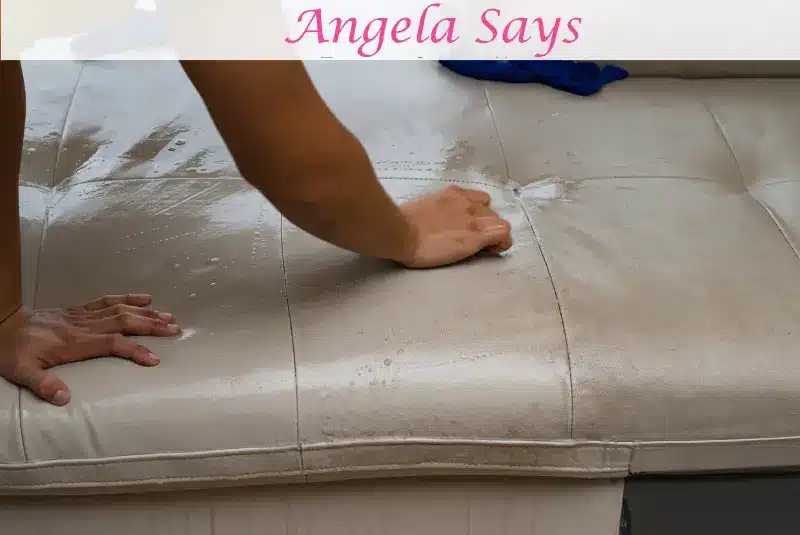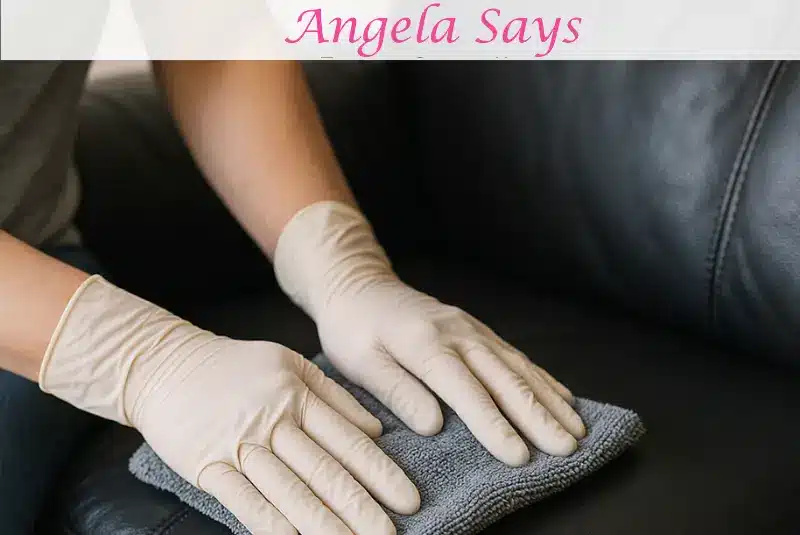Leather Upholstery Care: How to Clean Without Cracking or Fading

The Beauty and Challenge of Leather
Leather upholstery brings luxury and sophistication to any space. Whether it is the smooth surface of a leather sofa or the soft texture of a car seat, leather combines elegance and comfort in a way that few materials can match. However, maintaining that rich look requires thoughtful care.
Leather is a natural material that breathes, stretches, and changes with time. It can dry out, crack, or fade when exposed to harsh cleaners, direct sunlight, or too much moisture. Many people unintentionally damage their leather by using the wrong products or cleaning techniques.
The good news is that with the right approach, you can keep your leather furniture soft, vibrant, and beautiful for years. This guide will show you how to clean and care for your leather safely, avoid common mistakes, and establish an easy maintenance routine that preserves its natural charm.
Understanding Leather Upholstery

Before cleaning, it helps to understand what makes leather unique. Leather is a porous material made from animal hide and rich in natural oils that give it strength and flexibility. These same qualities also make it sensitive to heat, moisture, and strong chemicals.
Common Types of Leather
- Full-Grain Leather: The highest quality and most durable type. It keeps the natural grain of the hide and develops a beautiful patina over time.
- Top-Grain Leather: Smoothed and slightly sanded for a refined finish. It is easier to maintain but still needs conditioning.
- Corrected-Grain or Split Leather: Treated and coated for a uniform appearance. It is affordable but can stiffen if not cared for.
- Bonded Leather: Made from scraps combined with synthetic materials. It looks like genuine leather but can peel and fade more easily.
- Faux or PU Leather: A synthetic alternative that is easy to clean but lacks the breathability and natural aging of real leather.
Tip: Always read the care label or manufacturer’s instructions before using any cleaner. Using the wrong product can cause permanent damage.
Why Leather Ages
Leather’s beauty comes from its natural oils, which keep it soft and flexible. Over time, heat, sunlight, or harsh products can dry out these oils, leading to cracks. Too little humidity can dry the leather, while too much can cause mold. Balanced conditions, gentle cleaning, and regular conditioning are the keys to maintaining healthy leather.
Common Leather Care Mistakes

Even the best leather can be damaged by improper cleaning. Avoid these common pitfalls to keep it in top condition.
- Using Harsh Cleaners: Regular detergents, alcohol, or ammonia-based products remove natural oils and fade color.
Use only mild, pH-balanced leather cleaners or soaps made for leather care. - Using Too Much Water: Excess water makes leather stiff and may cause mold.
Wipe with a damp, not wet, cloth and dry immediately. - Scrubbing Aggressively: Rough tools or hard scrubbing can scratch and dull the surface.
Use a soft microfiber cloth and light circular motions. - Skipping Conditioner: Without regular moisturizing, leather becomes brittle and cracks.
Condition after every deep cleaning session with a quality conditioner. - Exposure to Sunlight or Heat: Constant exposure fades color and dries out fibers.
Keep leather away from direct light or use UV-protective sprays or curtains.
Avoid: Baby wipes or all-purpose cleaners, which often contain alcohol and fragrances that weaken protective coatings.
How to Clean Leather Without Cracking or Fading
A proper cleaning routine preserves leather’s texture, color, and longevity. Follow these five steps for best results.
- Dust and Vacuum: Use a soft brush or microfiber cloth to remove loose dirt and debris.
- Spot-Test: Try any cleaner on a hidden area first to ensure it does not cause discoloration.
- Use a Gentle Cleaner: Mix mild soap with distilled water or use a pH-balanced leather cleaner. Apply with a damp cloth, not directly to the leather.
- Wipe Dry: Remove all moisture with a dry, soft towel. Let the leather air-dry naturally away from sunlight.
- Condition: Once dry, apply conditioner evenly using a soft cloth. Let it absorb for an hour, then buff lightly for a healthy shine.
Maintenance Tip: Condition every three to six months for indoor furniture, or every two to three months for car interiors and heavily used pieces.
Preventive Leather Care Tips

- Protect from Sun and Heat: Keep leather away from heat sources and direct sunlight to avoid fading and drying.
- Balance Humidity: Maintain indoor humidity between 40 and 55 percent to prevent cracking or mold.
- Clean Consistently: Dust weekly, wipe monthly, and deep clean quarterly.
- Use Protection: Apply protective creams or use breathable covers for high-use areas.
Routine care helps leather age gracefully and retain its soft, polished look.
Professional or DIY Leather Cleaning
Regular cleaning and conditioning are safe to do at home, but deeper issues may require professional help.
When DIY Is Enough
- Your leather still feels soft and supple.
- You are dealing with light dirt or surface stains.
- You use high-quality products and follow proper methods.
When to Hire a Professional
- The leather is cracked, stiff, or discolored.
- You see deep stains such as ink or grease.
- You are unsure about the leather type or care products.
Tip: Professional leather cleaning once a year can extend the life of your leather by five to ten years.
Eco-Friendly Leather Care
Choosing environmentally friendly cleaning products is better for your leather, your home, and the planet.
Natural Cleaning Options
- Olive Oil and Vinegar: Mix two parts olive oil with one part vinegar for a gentle cleaner that restores shine.
- Castile Soap: Add a few drops to distilled water for a mild daily cleaner.
- Coconut Oil: Warm slightly, apply sparingly, and buff for softness and luster.
Avoid products that contain petroleum, silicones, or heavy fragrances. These ingredients block pores and cause long-term damage.
Troubleshooting Leather Problems
- Cracking: Apply a lanolin-based conditioner or rehydrating balm and massage gently.
- Fading: Use a color-restoring balm or conditioner with UV protection.
- Grease Stains: Sprinkle cornstarch, let sit overnight, then brush away.
- Ink Stains: Lightly dab with alcohol on a cotton swab, testing first.
- Odors or Mold: Wipe with a mix of water and vinegar and air-dry completely.
Keep the Luxury Alive
Leather is more than furniture material; it is a long-term investment in style and comfort. The secret to keeping it beautiful is simple: clean gently, condition regularly, and protect from the elements. With consistent care, your leather will not just last but will gain richness and character over time, becoming a reflection of quality craftsmanship and timeless design.
Frequently Asked Questions
For most leather furniture, a light cleaning every month and deep conditioning every three to six months works best. High-use items, like car seats or family room sofas, may need conditioning every two to three months. Consistent upkeep keeps leather soft, prevents cracking, and helps it age beautifully.
No. Most household cleaners, alcohol-based wipes, and all-purpose sprays are too harsh for leather. They strip away natural oils and protective coatings, leading to dryness and cracks. Always choose pH-balanced leather cleaners specifically made for upholstery.
Keep your leather away from direct sunlight, radiators, and vents. If that’s not possible, use UV-filtering curtains or blinds to reduce exposure. You can also apply a UV-protective leather spray to create an invisible shield that minimizes fading and discoloration.
Cracking occurs when the leather loses moisture. Begin by gently cleaning the surface with a mild leather cleaner, then apply a lanolin-rich conditioner or rehydrating balm. Let it absorb overnight and buff with a soft cloth. For deep cracks, professional restoration may be needed.
Yes. Eco-friendly cleaners made from natural oils, aloe, or beeswax clean just as well without using harsh chemicals. They maintain leather’s natural pH balance, prevent drying, and are safer for families, pets, and the environment. Always check that products are biodegradable and free from petroleum or silicone.
